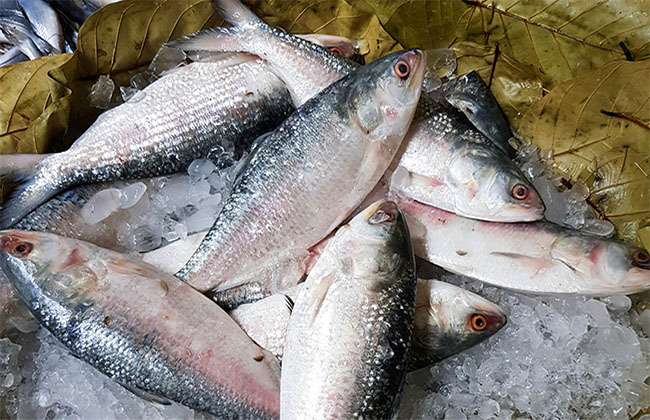
Now is the peak season for hilsa in Bangladesh. But fishers are not getting the desired amount of the fish in the Padma and Meghna. Till now, fishermen have caught less than one-fourth of the amount of hilsa they got last season. As a result, fishermen and hilsa traders have become frustrated. The price of hilsa is also higher in the market. After setting a record in hilsa harvesting last year, everyone is concerned over such a situation. Experts say the movement of hilsa is hampered due to river pollution caused by industrial wastes, numerous chars in the river and excessive use of fishing nets in the estuaries. So, hilsa is choosing the deep sea instead of the river for safe roaming. However, hilsa was not found in expected amounts in rivers at this time last year too. However, lots of the fish were caught during the late season. In this case, it is necessary to check whether the life cycle, movement, reproduction, etc. of hilsa has changed. Besides, in order to protect hilsa, the navigability of the rivers should be increased, and it should be kept free from occupation and pollution. It is also important to make the movement of hilsa undisturbed.
Hilsa production has doubled in 10 years. Not only has the production of hilsa increased in the country, but also a lot of big hilsa is being caught. Hilsa production has been steadily increasing due to the cessation of catching hilsa fries in sanctuaries and mother hilsa during the ban period. All this has been possible due to the continuous steps taken by the government. But suddenly, hilsa is not available in rivers during July and August, known as the full season. Researchers say rising sea temperatures are delaying the hilsa’s coming to rivers. Besides, the amount of rain is also insignificant. The river water did not increase due to low rainfall. The life cycle of hilsa has also changed. This is delaying the fish’s arrival at the rivers. At the mouth of the sea, the rising chars in the rivers are blocking the path of hilsa. Due to river erosion and floods, innumerable chars are being created every year, and rivers are being filled up, hindering the movement of hilsa.
To improve such a situation, inter-ministerial initiatives are urgently needed. To protect the navigability of rivers, strict laws must be enforced to prevent industrial pollution. At the same time, research work should be extensive. We need to see if there is any change in the movement and habitat of hilsa. Due to both man-made and natural causes, rivers are filled with silt and the fish habitat is shrinking. In addition, the dredging of sand in the river during the breeding season of hilsa is causing damage to the eggs and minnows of hilsa. It is necessary to determine the next course of action considering all the issues the study raised.
Today, we are proud of the production of hilsa. But at the same time, we have some challenges – maintain hilsa production. Hilsa can change habitats due to various reasons, including climate, food, reproduction etc. The temperature has risen by about 1 degree Celsius. No one knows how the behaviour of the fish will change as the temperature rises. However, there is no doubt that sea fish are slowly moving towards lower temperatures. There is a connection between the movement of hilsa fish in the river and the sea for food and laying eggs. It is still unknown at this time what will happen to the connection after temperatures rise. Research on hilsa needs to be further enhanced considering long-term effects. Bangladesh is at the top in hilsa production. In order to sustain this achievement, more importance needs to be given to research on fisheries as well as conservation of its habitat.

